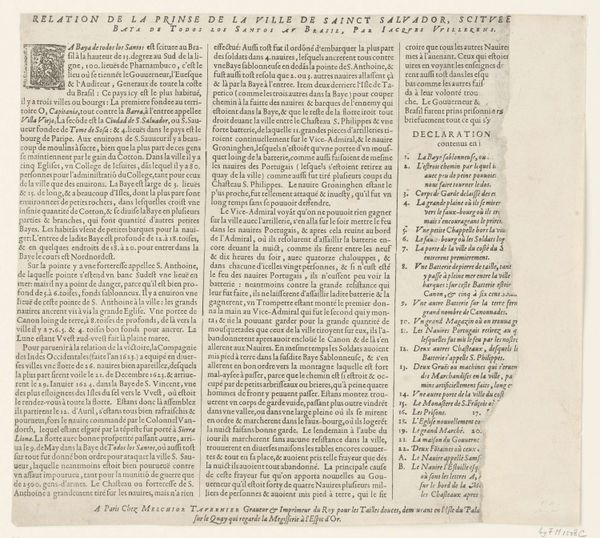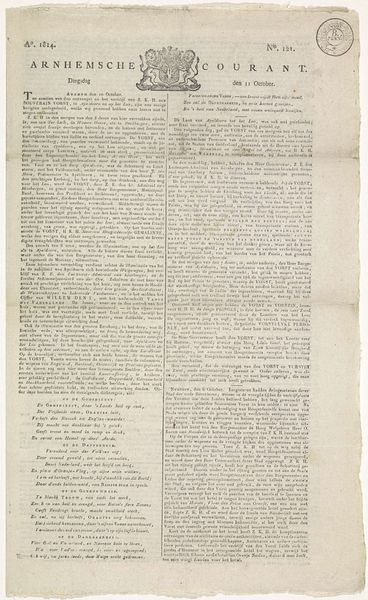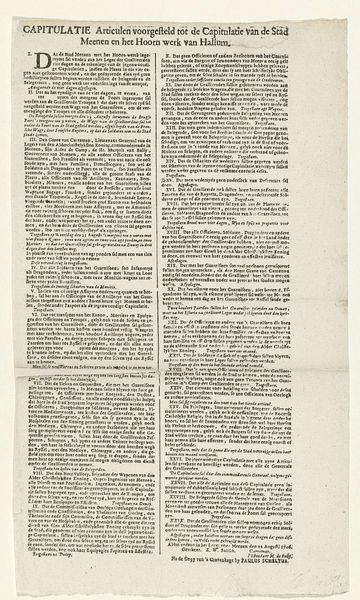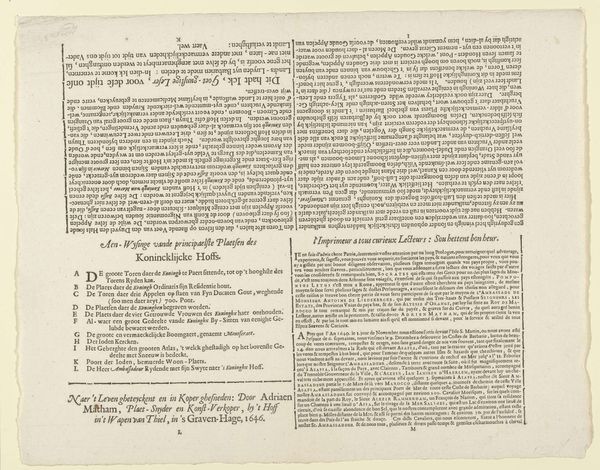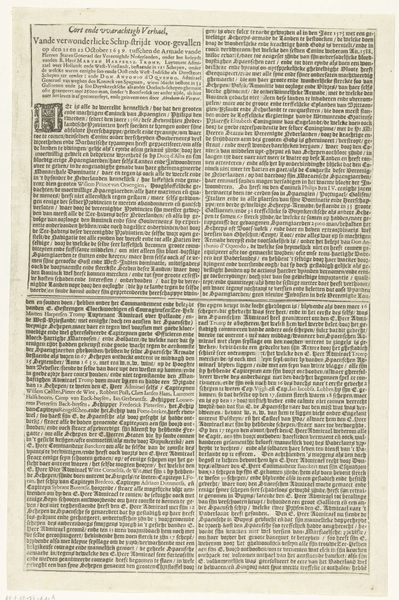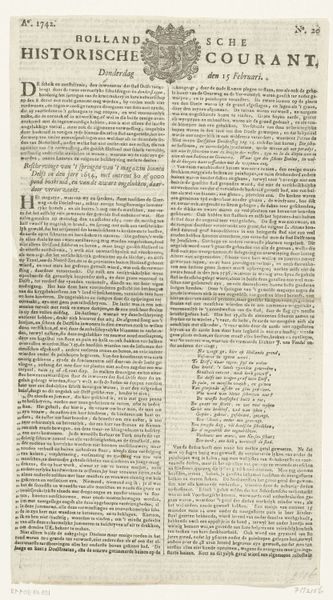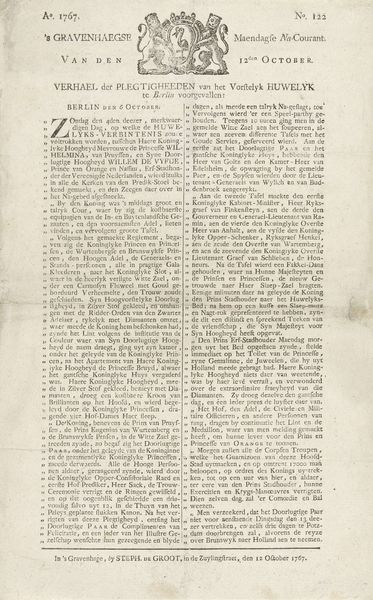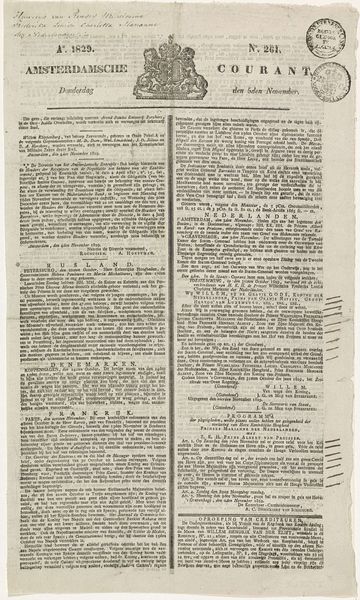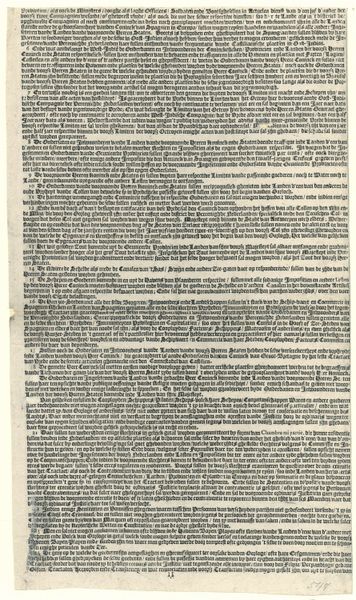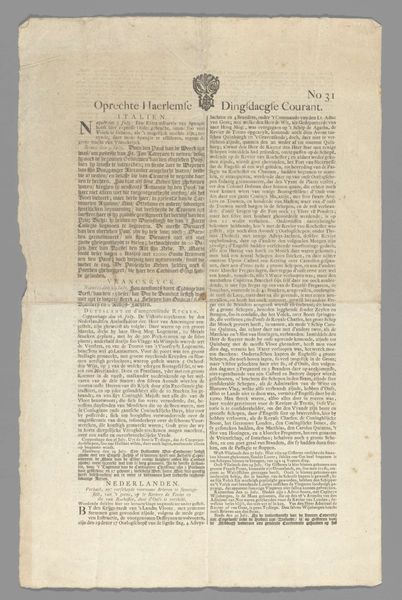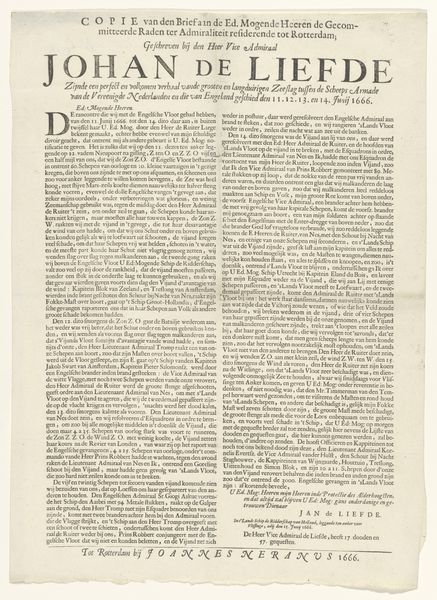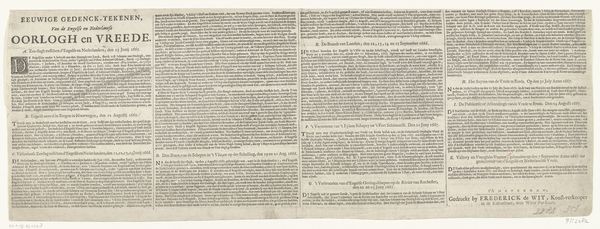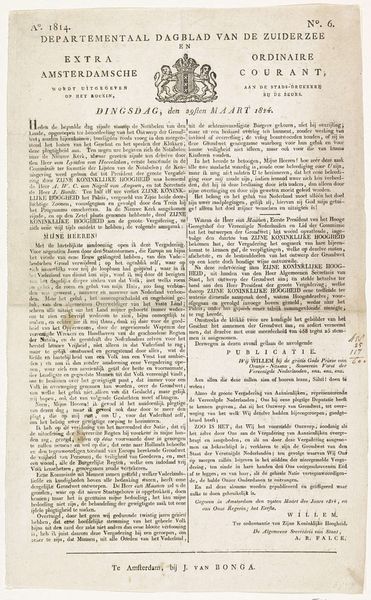
print, textile, paper
# print
#
textile
#
paper
Dimensions: height 305 mm, width 390 mm
Copyright: Rijks Museum: Open Domain
Curator: Here we have “Het paleis van de sultan van Marokko (tekstblad 1), 1640-1641”, a print by Adriaen Matham from approximately 1646. It's an etching on paper, currently residing in the Rijksmuseum. Editor: My goodness, it’s dense! It’s almost purely text. I'm immediately struck by the sheer amount of writing crammed onto a single page. It feels less like an artwork and more like a broadside announcement or an informational poster. It's really begging to be read, almost challenging you to decipher its secrets. Curator: Precisely! This piece isn't merely decorative; it serves as a historical document offering insights into Dutch perceptions and reporting on Morocco during the 17th century. Matham, as an artist, played a significant role in disseminating knowledge and shaping public opinion about distant lands. It accompanied or came from his experiences and or from sources accessible during that time. Editor: So, it's a textual landscape portraying, in essence, cultural reportage. You almost wonder if someone at the time treated it like scrolling through today's social media feed about a faraway country, devouring quick impressions mixed with questionable facts. And just like today, there would’ve been an implicit power dynamic in how the story gets told! Curator: Indeed. The text provides a narrative, possibly embellished or biased, about Moroccan royalty and customs. By displaying this print, the Rijksmuseum facilitates dialogue on historical cross-cultural encounters, challenging us to consider issues of representation, colonialism, and the public role of imagery during this historical period. Editor: Looking closer, I see that within the block of densely printed information, different font styles or font sizes must break up the monotonous text—perhaps there is an effort at visual organization, even elegance, amidst what at first feels like a sea of words. I realize now that seeing the page in its untouched, slightly ragged condition somehow magnifies how valuable a historical artifact this must be. Curator: Right. And thinking about the medium itself—a printed sheet—underscores the democratic nature of disseminating news. The content, along with its deliberate visual layout, highlights print as a form of propaganda. Editor: It is sobering to remember, given the passage of centuries, that these "exotic" reports shaped beliefs and actions in both subtle and significant ways—and it seems like it will never stop. Anyway, that’s a lot to think about, particularly from just a seemingly basic print. Curator: Exactly. This piece showcases the intersection of art, history, and cultural exchange—and leaves us pondering how we interpret “news” today.
Comments
No comments
Be the first to comment and join the conversation on the ultimate creative platform.

